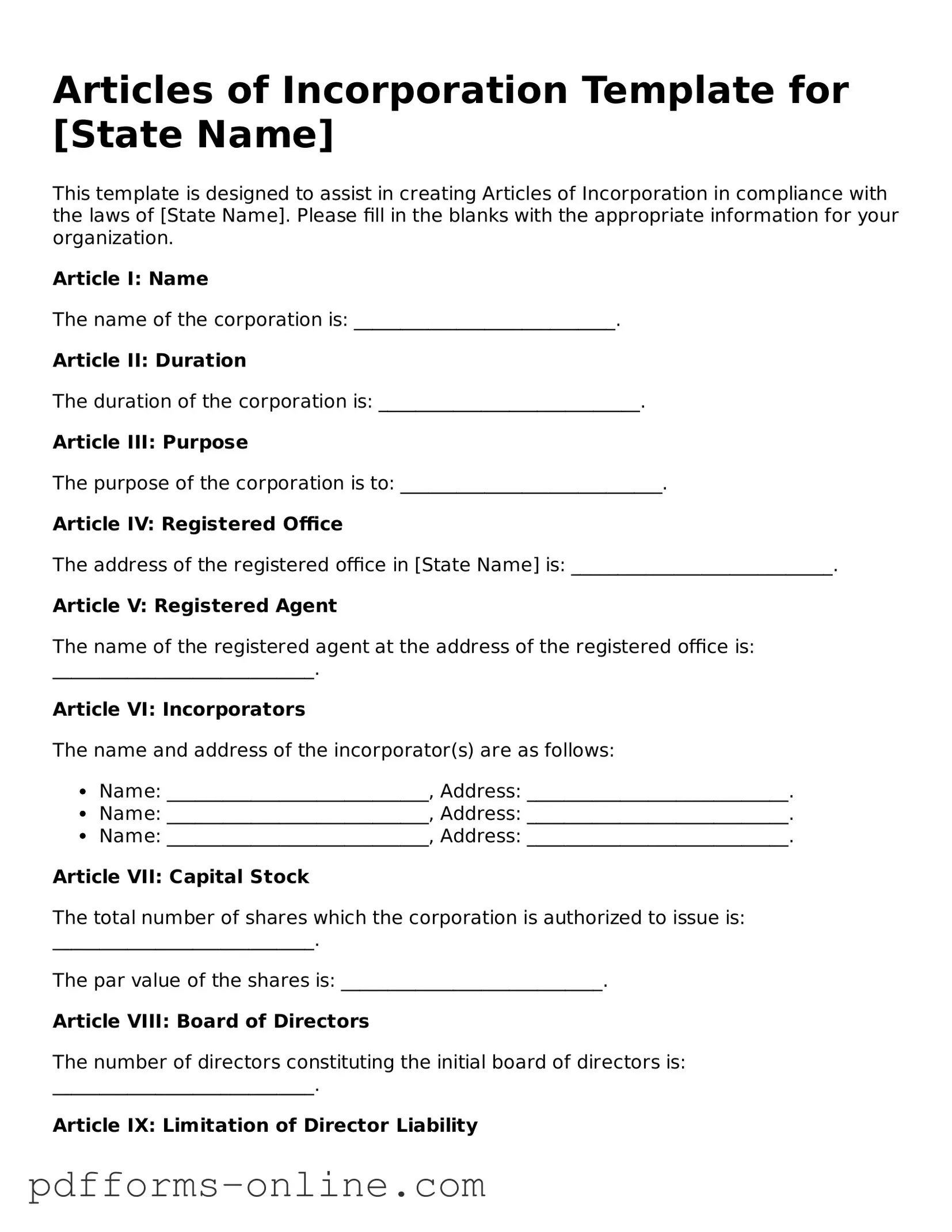Articles of Incorporation Template for [State Name]
This template is designed to assist in creating Articles of Incorporation in compliance with the laws of [State Name]. Please fill in the blanks with the appropriate information for your organization.
Article I: Name
The name of the corporation is: ____________________________.
Article II: Duration
The duration of the corporation is: ____________________________.
Article III: Purpose
The purpose of the corporation is to: ____________________________.
Article IV: Registered Office
The address of the registered office in [State Name] is: ____________________________.
Article V: Registered Agent
The name of the registered agent at the address of the registered office is: ____________________________.
Article VI: Incorporators
The name and address of the incorporator(s) are as follows:
- Name: ____________________________, Address: ____________________________.
- Name: ____________________________, Address: ____________________________.
- Name: ____________________________, Address: ____________________________.
Article VII: Capital Stock
The total number of shares which the corporation is authorized to issue is: ____________________________.
The par value of the shares is: ____________________________.
Article VIII: Board of Directors
The number of directors constituting the initial board of directors is: ____________________________.
Article IX: Limitation of Director Liability
To the fullest extent permitted by [State Name] law, directors of the corporation shall not be liable to the corporation or its shareholders for monetary damages for any breach of fiduciary duty.
Article X: Indemnification
The corporation shall indemnify any officer, director, employee, or agent against expenses and liabilities incurred in connection with the corporation, as permitted by law.
Article XI: Miscellaneous
This corporation shall not engage in any activities contrary to the laws of [State Name].
IN WITNESS WHEREOF, the undersigned incorporator has executed these Articles of Incorporation on the ___ day of __________, 20__.
____________________________________
Signature of Incorporator
____________________________________
Printed Name
